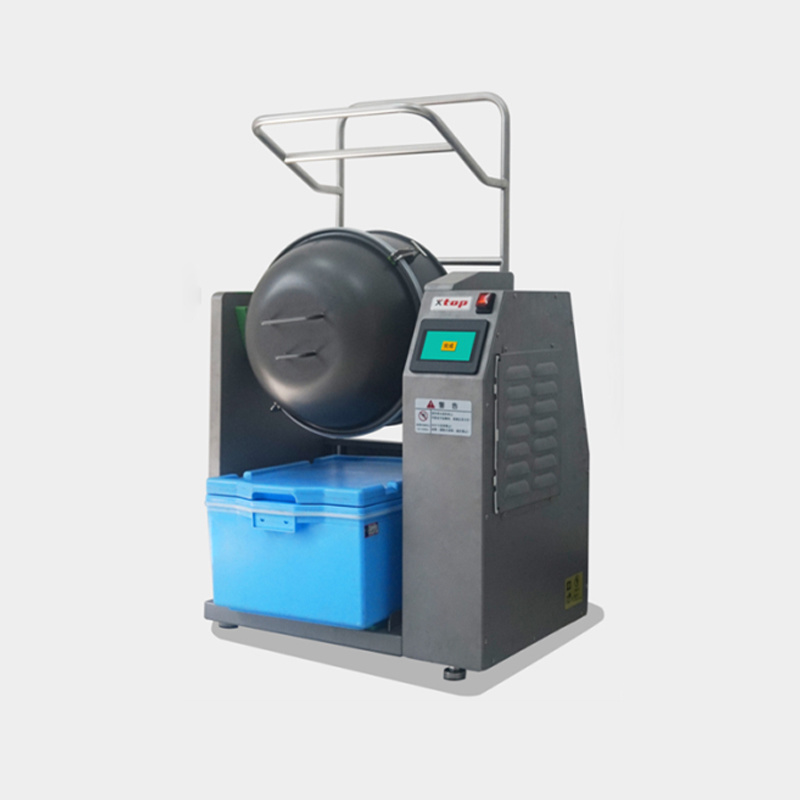Exploring the Innovative Technology Behind Sushi Food Delivery Trains
Release Time:2025-10-29
Exploring the Innovative Technology Behind Sushi Food Delivery Trains
Table of Contents
- Introduction to Sushi Food Delivery Trains
- The Evolution of Sushi Delivery Methods
- How Sushi Delivery Trains Work
- Design Innovations in Sushi Delivery Systems
- Benefits of Sushi Food Delivery Trains
- Impact on the Restaurant Industry
- The Future of Sushi Delivery Technology
- Frequently Asked Questions
- Conclusion
Introduction to Sushi Food Delivery Trains
Sushi food delivery trains represent a remarkable fusion of technology and culinary art. These innovative systems revolutionize how sushi is served, enhancing the dining experience while maintaining freshness and quality. Understanding the technology behind these delivery trains allows us to appreciate their role in modern sushi restaurants.
The Evolution of Sushi Delivery Methods
Sushi has a rich history that dates back centuries, evolving from a method of preserving fish in fermented rice to the vibrant dishes we enjoy today. Initially, sushi was a time-consuming affair, requiring considerable effort to prepare and serve. The introduction of delivery methods has transformed sushi consumption, making it more accessible.
In the past, traditional sushi restaurants relied on waitstaff to deliver orders to customers. However, as demand for sushi surged, particularly in urban areas, the need for a more efficient system became apparent. This led to the development of sushi delivery trains, which streamline the delivery process while adding an element of entertainment to the dining experience.
How Sushi Delivery Trains Work
Sushi delivery trains utilize a simple yet effective mechanical system to transport plates of sushi from the kitchen to customers. Here's how it works:
1. The Track System
The foundation of any sushi delivery train is its track system. These tracks are strategically placed throughout the restaurant, often winding around tables and counter spaces. The design allows for maximum efficiency, ensuring that food reaches customers quickly.
2. Automated Trains
The trains themselves are equipped with wheels that glide smoothly along the tracks. Most models feature multiple compartments, each designed to hold a plate of sushi. Some advanced models even offer temperature control to keep sushi fresh during transportation.
3. Control Mechanisms
Sushi delivery trains operate using a combination of electronics and sensors. These systems enable restaurant staff to control the flow of food, managing when and where each train delivers its contents. This automation minimizes wait times and enhances customer satisfaction.
4. Interactive Displays
Many sushi delivery trains include interactive displays that allow customers to place orders directly from their tables. This not only streamlines the process but also engages diners, making the experience more enjoyable.
Design Innovations in Sushi Delivery Systems
The design of sushi delivery trains has evolved significantly over the years, with innovations aimed at improving functionality and aesthetics.
1. Aesthetic Appeal
Modern sushi delivery trains come in various designs, often reflecting the restaurant's theme. Some feature sleek, minimalist looks, while others embrace traditional Japanese aesthetics. The visual appeal of these trains enhances the overall dining atmosphere.
2. Ergonomic Considerations
Designers are increasingly focusing on ergonomics to ensure that sushi delivery trains are user-friendly. For example, adjustable heights and easy access points make it simple for customers to retrieve their orders without hassle.
3. Material Advancements
The materials used in constructing sushi delivery trains have also advanced. Durable, food-safe materials ensure that the trains are both long-lasting and easy to clean, while modern finishes help maintain hygiene standards.
Benefits of Sushi Food Delivery Trains
Implementing sushi delivery trains in restaurants offers a plethora of advantages, both for business owners and customers.
1. Increased Efficiency
One of the primary benefits of sushi delivery trains is their ability to increase operational efficiency. By automating the delivery process, restaurants can serve more customers in less time, ultimately boosting revenue.
2. Enhanced Customer Experience
The novelty factor of sushi delivery trains adds excitement to dining. Customers enjoy watching their orders arrive, creating a memorable experience that encourages repeat visits.
3. Reduced Labor Costs
Sushi delivery trains require less staff involvement in the delivery process, allowing restaurant owners to allocate resources more effectively. This can lead to significant labor cost savings over time.
4. Quality Preservation
With temperature-controlled compartments, sushi delivery trains help preserve the quality of the food. Keeping sushi at the right temperature ensures that it remains fresh and delicious by the time it reaches the customer.
Impact on the Restaurant Industry
The introduction of sushi food delivery trains has significantly impacted the restaurant industry, particularly for sushi establishments.
1. Industry Growth
As sushi delivery trains become more popular, they contribute to the overall growth of the sushi market. Restaurants that adopt this technology often experience increased foot traffic and higher sales.
2. Competitive Advantage
In a crowded dining landscape, offering a unique experience through sushi delivery trains provides a competitive edge. Restaurants that incorporate this technology can attract new customers looking for something different.
3. Adaptation and Innovation
The rise of sushi delivery trains has prompted other food establishments to rethink their delivery methods. This drive for innovation encourages restaurants to explore new technologies and enhance their service offerings.
The Future of Sushi Delivery Technology
Looking ahead, the future of sushi delivery technology is poised for exciting developments.
1. Advanced Robotics
As robotics technology continues to progress, we can expect sushi delivery systems to incorporate more sophisticated robotic elements. This may lead to fully autonomous delivery trains capable of navigating complex restaurant layouts.
2. Enhanced Interactivity
Future sushi delivery trains may feature even more interactive components, allowing customers to customize their orders in real-time while enjoying a more immersive dining experience.
3. Sustainability Initiatives
With growing concern over environmental sustainability, future designs will likely prioritize eco-friendly materials and energy-efficient systems, ensuring that sushi delivery trains align with modern values.
Frequently Asked Questions
1. How do sushi delivery trains keep sushi fresh?
Sushi delivery trains often feature temperature-controlled compartments that help maintain the ideal serving temperature, preserving the freshness and quality of sushi during transport.
2. Are sushi delivery trains suitable for all types of sushi?
While sushi delivery trains work best for certain types of sushi, such as nigiri and rolls, they can be adapted for other dishes as long as they fit within the train's compartments.
3. How much do sushi delivery trains cost?
The cost of sushi delivery trains varies widely based on features, design, and manufacturer. Basic models may start at a few thousand dollars, while more advanced systems can reach significantly higher prices.
4. Can restaurants customize their sushi delivery trains?
Many manufacturers offer customizable options, allowing restaurants to tailor their sushi delivery trains to fit their branding and operational needs.
5. What is the maintenance required for sushi delivery trains?
Regular cleaning and maintenance are essential to keep sushi delivery trains in optimal condition. This includes routine checks on the electronic systems, track alignment, and general cleanliness to ensure food safety.
Conclusion
Sushi food delivery trains represent a remarkable intersection of technology and culinary art, enhancing the dining experience while improving operational efficiency in sushi restaurants. As this technology continues to evolve, it promises to usher in new innovations that will further refine how sushi is served and enjoyed. Understanding the mechanics, design, and benefits of these systems not only highlights their importance in modern dining but also showcases the continuous advancements within the food industry as a whole. The sushi delivery train does more than just transport food; it transforms the entire dining experience, making it an exciting time for sushi enthusiasts and restaurateurs alike.
Keywords:Sushi Food Delivery Trains
CATEGORY
Related News
2024-02-03











